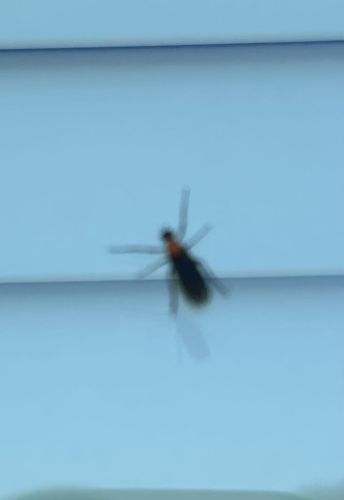Firefly
Scientific Name: Family Lampyridae
Order & Family: Order Coleoptera, Family Lampyridae
Size: 5 mm to 25 mm (0.2 to 1 inch)

Natural Habitat
Typically found in meadows, forests, and suburban areas, especially near water sources, in humid environments.
Diet & Feeding
Adult fireflies typically feed on nectar, pollen, or dew, and some species do not feed at all. Larvae are carnivorous, preying on snails, slugs, worms, and other small invertebrates.
Behavior Patterns
Known for their bioluminescence, fireflies use light signals for mate attraction. Each species has a unique flash pattern. They are primarily nocturnal. Larvae are also often predaceous.
Risks & Benefits
Fireflies are not known to pose risks to humans. As beneficial insects, their larvae help control pest populations like slugs and snails, and adults play a role in pollination. They are also indicators of a healthy ecosystem.
Identified on: 9/19/2025